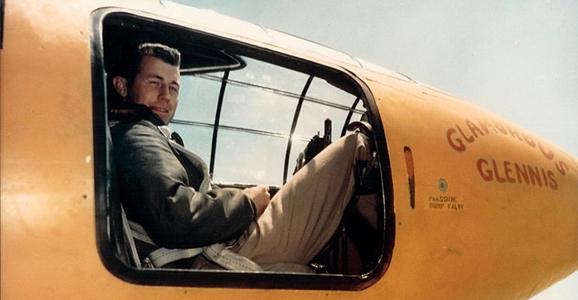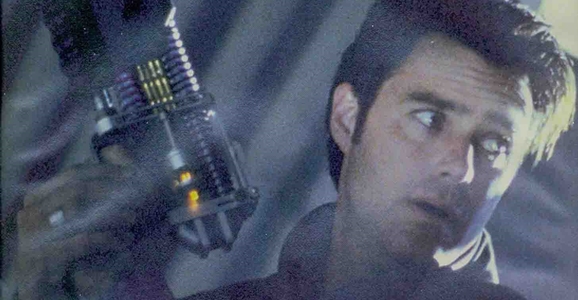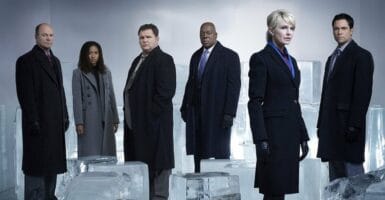Yeager Broke The Sound Barrier And Wells Defied Gravity: Today In Science And Science Fiction
 Chuck Yeager Breaks the Sound Barrier
Chuck Yeager Breaks the Sound Barrier
There are plenty of ways you could make a name for yourself in this world, some positive and all too many negative. Maybe you become a scientist and cure cancer. Maybe you drink and get behind the wheel, resulting in tragic circumstances. Maybe you’re just a really nice person who makes a positive difference in the lives of all those around you. But if you had “climb into a metal tube and fly faster than the speed of sound” on your list, I’m afraid you’re too late. Chuck Yeager beat you to it, on this very day in 1947.
Having flown 64 missions over Europe during World War II, after the war Yeager volunteered to fly the experimental X-1 planes, built by Bell Aircraft Company to see if it was possible to achieve supersonic flight. It was previously theorized that any craft trying to cross that barrier would be destroyed in the attempt. Thumbing his nose at such namby-pamby talk, on October 14, 1947, Yeager and the X-1 were hauled into the air by a B-29. There, in the skies above Rogers Dry Lake in southern California, Yeager pushed the X-1 to 40,000 feet and faster than 662 miles per hour, an act so manly it created shockwave that sprouted a thick, luxurious beard on the chin of every man, woman, and child within a 50-mile radius. He later bested his 1947 record, hitting 1,650 mph inside an X-1A in 1953.
 To the Moon!
To the Moon!
On a more fictional note, H.G. Wells’ The First Men in the Moon listed October 14, 1899 as the date a reclusive scientist named Professor Cavor first created Cavorite. The mysterious substance was the unexpected result of experiments combining “a number of metals and certain other things.” The material negated the effects of gravity and allowed for the lunar voyage described in the book. Oddly enough, The First Men in the Moon was published in 1901, actually putting Cavor’s journey in the relative past, a counter-intuitive choice for such heady science fiction fare.
Cavorite has popped up or been referenced many times over the years, getting name checked in Alan Moore’s League of Extraordinary Gentlemen books, Syfy’s Warehouse 13, and even Vernor Vinge’s A Deepness in the Sky.
 Stargate’s Robert C. Cooper: October 14, 1968
Stargate’s Robert C. Cooper: October 14, 1968
Cooper served as executive producer and writer on all three Stargate TV spinoffs, and he actually co-created both Atlantis and Universe with Brad Wright. He actually left SGU in the summer of 2010, almost a year before that series closed up shop. His IMDb listing doesn’t have any new projects listed after SGU, but that doesn’t necessarily mean he isn’t working on anything. Hell, even if he isn’t, I think the guy’s earned a vacation after nearly fifteen years and three separate shows! (Cooper’s the one on the left in the picture above.)
 TekWar’s Greg Evigan: October 14, 1953
TekWar’s Greg Evigan: October 14, 1953
Digging a little deeper into sci-fi obscurity, we come to actor Greg Evigan, who has been working in TV since the ‘70s, but who is probably best known to sci-fi fans — at least those of us old enough to be paying attention during the ‘90s — as the lead of the TekWar TV spinoff. For those not familiar, TekWar was a series of books created by William Shatner (and ghost-written by Ron Goulart) beginning in 1989. Shatner said the series was dreamed up on the set of Star Trek V: The Final Frontier and intended to merge elements of Trek and Shatner’s other well-known series, T.J. Hooker. The books were adapted into a series of TV movies starring Evigan in 1994, and went on to spawn an ongoing series that lasted a single season on the USA Network. If your interest is piqued, well looky here, you can get the whole series for twenty-five bucks on Amazon. Buy one and send Greg probably a fraction of a penny as a birthday present!












